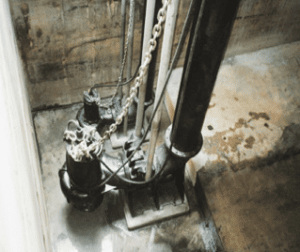- Medical wastewater generated from hospitals, medical clinics…
- Mostly generated from toilets, equipment washing areas, cafeterias, surgery areas, treatment areas, medical examination and treatment, testing, laundry…
- If not thoroughly treated before being discharged into the outside environment, it will cause an imbalance in the ecosystem in the water source.
- Causing serious effects on human health, creating the risk of pollution and spreading disease to the community.
- Therefore, a medical wastewater treatment system from hospitals and medical clinics is really necessary
Origin of medical wastewater
Sources of medical (hospital) wastewater generation come from many different activities, which can be classified into 2 main sources:
– Domestic wastewater: from cleaning, bathing, washing activities of officials, hospital staff, relatives and patients, room cleaning activities…
– Medical wastewater: from medical examination and treatment activities, minor surgery, surgery, testing, secretions, blood, pus, removed body parts, cleaning instruments medical
Composition properties of medical wastewater
– Organic substances
– Suspended solids
– Pathogenic germs and bacteria: Salmonella, staphylococcus, streptococcus, gastrointestinal viruses, polio, parasites, amoebas, fungi…
– Other biological pathogens in the patient’s blood, pus, fluid, sputum, and stool
– Toxic chemicals from the body and treatment preparations, even radioactive substances.
– In addition, medical wastewater also contains a number of other pollutants shown in the following table:
 Medical wastewater applies according to QCVN 28:2010/BTNMT download here
Medical wastewater applies according to QCVN 28:2010/BTNMT download here
Some images of medical wastewater generated from hospitals

Medical wastewater treatment process </ h2>
The wastewater treatment plan selected depends on the specific conditions of the Project and the treatment satisfies the following requirements:
- Does not make noise, does not cause unpleasant odors to the surrounding area.
- Does not affect the aesthetics and general activities of the hospital and medical examination and treatment area
- Simple management and operation, reasonable operating costs.
From the above characteristics and the requirements to be achieved after treatment, wastewater treatment technology includes the following main steps:
- Step 1: Use mechanical methods to remove large substances suspended in water and stabilize the flow of pollutants in the water.
- Step 2: Use anaerobic biodegradation method combined with anoxic and 2-step aerobic combination (MBBR + suspended) to remove harmful organic substances present in wastewater. Aims to reduce the amount of Nitrogen, Phosphorus and organic pollutant content in water (COD; BOD)….
– Step 3: Use disinfection method to kill harmful microorganisms in water,
– Ensure the output water meets discharge standards QCVN 28:2010/BTNMT for medical wastewater
– Sewage sludge will be pumped to the sludge tank and periodically sucked.
The system is sealed to avoid odors and especially does not cause noise in the area around the hospital
Medical wastewater treatment technology

Explaining medical wastewater treatment technology
- Wastewater from functional rooms in the hospital, according to the collection network, flows to the hospital’s centralized wastewater treatment system and through the trash screen.
- In the tank, solid objects with excitation greater than 2 mm will be retained.

Waste basket
- After passing through the garbage screening device, wastewater enters the air conditioning tank.
- Here the water source will be evenly mixed thanks to the aeration process supplied from outside
- The water source is mixed so the pollution content and water flow will be evenly distributed throughout the tank, helping the biological treatment process achieve the highest efficiency.
Wastewater pump
- Water from the equalization tank, after a certain retention time, will be pumped by a submersible pump through the anaerobic tank.
- Here, the process of decomposition of organic substances takes place under the influence of microorganisms in the absence of oxygen.
- In addition, Phosphorus processing also takes place with the participation of AOPs bacteria group.
- Biological release of phosphorus occurs through the development of AOPs which depends first on anaerobic and then aerobic conditions.
- Under anaerobic conditions, bacteria break down high-energy bonds in stored polyphosphate chains, resulting in phosphate release accompanied by the consumption of biodegradable organic matter.
- When microorganisms belonging to the AOPs group from the anaerobic biological tank are introduced into the aerobic biological system, they capture phosphate (PO4)3- and form polyphosphate molecules inside the cell, thus the phosphorus content in the system will gradually decrease.
- When microorganisms are removed (excess sludge), this accumulated phosphorus is also eliminated.
- The wastewater is then passed through an anoxic tank.
- Part of the sludge from the Anoxic tank is circulated back to the anaerobic tank to maintain the amount of microorganisms.
- Water from the anaerobic tank will automatically flow into the anoxic tank supplemented with microbial media and methanol to supplement nutrition for microorganisms
- Here, anoxic microorganisms will decompose pollutants such as: Nitrogen, phosphorus, to create a favorable environment for anoxic microorganisms to work best in a tank with a submerged agitator to:
- Increases water movement, helps microorganisms move evenly in water,
- Air diffusing into water will limit and form an anoxic environment.

Medical wastewater treatment system
- After passing through the anoxic tank, the wastewater flows through gravity to the aerobic tank with MBBR media and automatically flows through the suspended aerobic tank.
- In these two tanks, aerobic microorganisms are very active thanks to the adequate oxygen supply from air blowers located outside.
- Convenient and stable living environment when sticking to MBBR substrates, aerobic microorganisms will use pollutants such as: BOD, COD, N.. as food to grow and develop. development leads to the elimination of pollutants in water, the mechanism of action of aerobic microorganisms is shown as follows:
The process of handling filial piety includes 3 stages:
+ Stage 1: Oxidation of organic substances to form CO2 and H2O, part of the energy
C xH y O z + O2 => CO 2 + H 2 O + DH
+ Stage 2: Microorganisms synthesize new cells:
C x H yO z +.NH3 + O 2 => CO 2 + H 2 O + DH
+ Stage 3 Intracellular degradation:
C 5H 7 NO 2 + 5O 2 => 5CO 2 + 5 H 2O + NH 3 ± DH- To ensure no loss of microorganisms and create the most effective anoxic environment, 2 submersible pumps are arranged in the suspended aerobic tank to circulate water to the anoxic tank. This circulation effectively removes pollutants completely.
- From the suspended aerobic tank, the wastewater flows by gravity to the lamen sedimentation tank with the addition of PAC sedimentation aid.
- Here the sedimentation process occurs to separate post-treatment water and microbial biomass which is sludge.
- The sedimentation process is highly effective when using a lamellar sedimentation plate.
- Settled sludge will be pumped to the sludge compression tank by 2 submersible pumps.
- The compressed sludge will be sucked and treated periodically; The water separated from the sludge compression tank will automatically circulate to the equalization tank and continue to be processed.
- Wastewater from the water collection trough of the settling tank will automatically flow through the disinfection tank.
- Here Javen disinfectant chemical will be injected, microorganisms remaining in the water source will be completely removed, the treated water meets discharge standards according to QCVN 28:2010/ BTNMT, type A.

Hospital wastewater treatment system
Advantages of medical wastewater treatment technology
With the above technological process using biotechnology that is widely applied in other countries and around the world, the treatment efficiency is very high. In addition, the system also has outstanding advantages.
- Biological treatment process: is the process of treating nitrogen, phosphorus, and synthetic organic substances.
- In which, the processes of nitrification and denitrification occur continuously in biological tanks.
- The denitrification process uses existing hydrocarbon sources in wastewater, does not require additional external hydrocarbon sources, limits the growth of filamentous bacteria and reduces caking and hardness. sedimentation in settling tanks because they do not use settling tanks like traditional technologies.
- The Nitrate reduction process occurs, raising the pH and alkalinity of the wastewater, creating oxygen to facilitate the subsequent nitrification process, reducing the amount of gas needed for the nitrogen treatment process;
- MBBR aerobic tanks combined with suspended aerobic tanks have a high density of microorganisms per unit volume, so the organic matter load is high
- Therefore, the organic matter treatment efficiency is higher and the ability to withstand shock loading is high.
- At the same time, due to high microbial density, the possibility of sludge generation is low
- Biotechnology minimizes investment costs for treatment systems, saving investment costs.
- The system’s operating process is controlled completely automatically, which eases operational work, saves electricity costs, and ensures that post-treated water quality is always stable and satisfactory.

 Medical wastewater applies according to QCVN 28:2010/BTNMT download
Medical wastewater applies according to QCVN 28:2010/BTNMT download 

Bài viết liên quan
UASB tank in wastewater treatment
Introducing the UASB tank UASB stands for Upflow Anaerobic Sludge Blanket, roughly translated as reverse...
Wastewater treatment of carton paper packaging production
Origin of wastewater from carton packaging production Wastewater containing printing ink generated during the production...
Common Aerotank tank problems and how to fix them
Aerotank incidents during the operation of the WWTP often arise equipment problems such as pumps,...